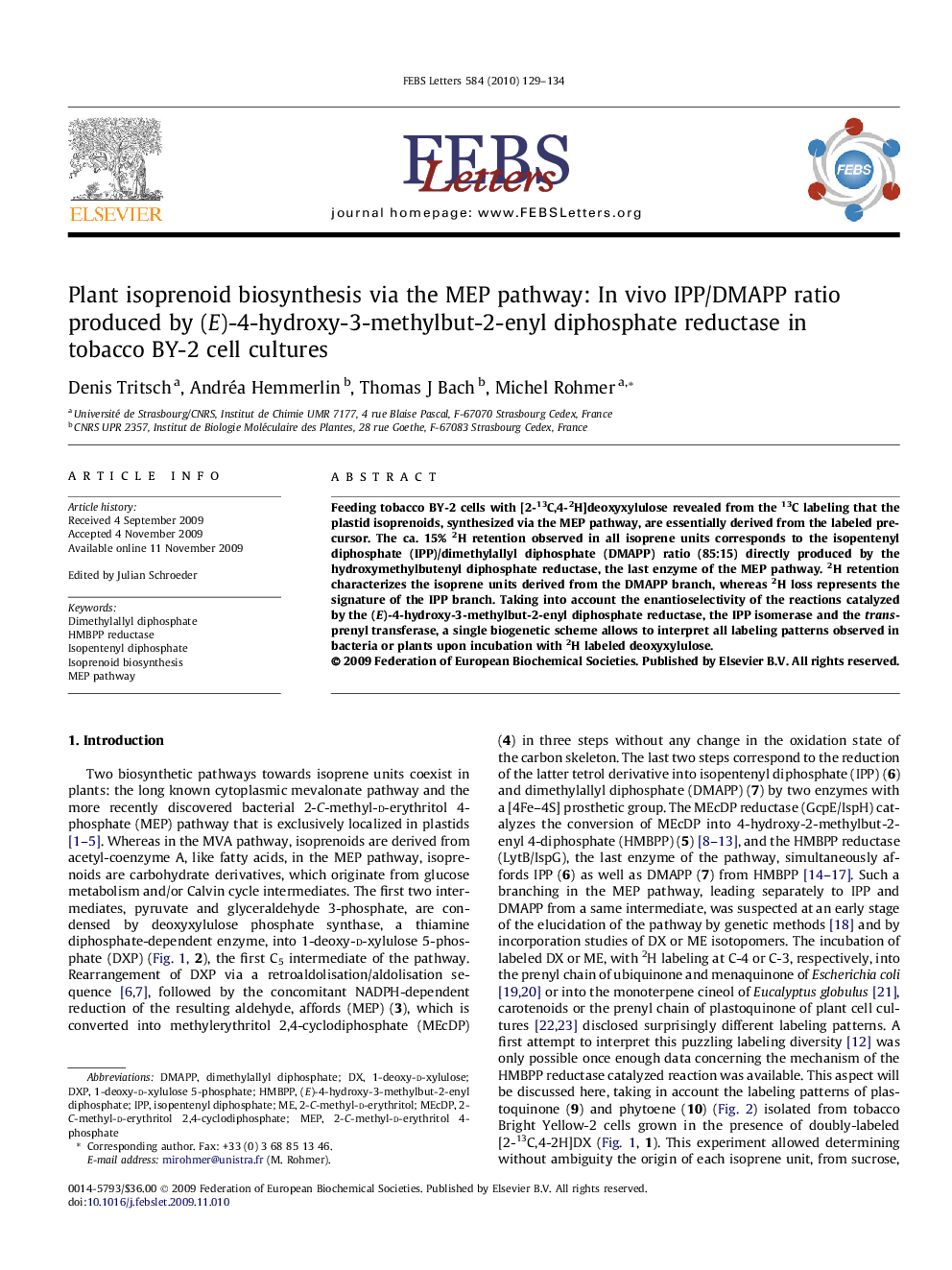| Article ID | Journal | Published Year | Pages | File Type |
|---|---|---|---|---|
| 2048864 | FEBS Letters | 2010 | 6 Pages |
Feeding tobacco BY-2 cells with [2-13C,4-2H]deoxyxylulose revealed from the 13C labeling that the plastid isoprenoids, synthesized via the MEP pathway, are essentially derived from the labeled precursor. The ca. 15% 2H retention observed in all isoprene units corresponds to the isopentenyl diphosphate (IPP)/dimethylallyl diphosphate (DMAPP) ratio (85:15) directly produced by the hydroxymethylbutenyl diphosphate reductase, the last enzyme of the MEP pathway. 2H retention characterizes the isoprene units derived from the DMAPP branch, whereas 2H loss represents the signature of the IPP branch. Taking into account the enantioselectivity of the reactions catalyzed by the (E)-4-hydroxy-3-methylbut-2-enyl diphosphate reductase, the IPP isomerase and the trans-prenyl transferase, a single biogenetic scheme allows to interpret all labeling patterns observed in bacteria or plants upon incubation with 2H labeled deoxyxylulose.
